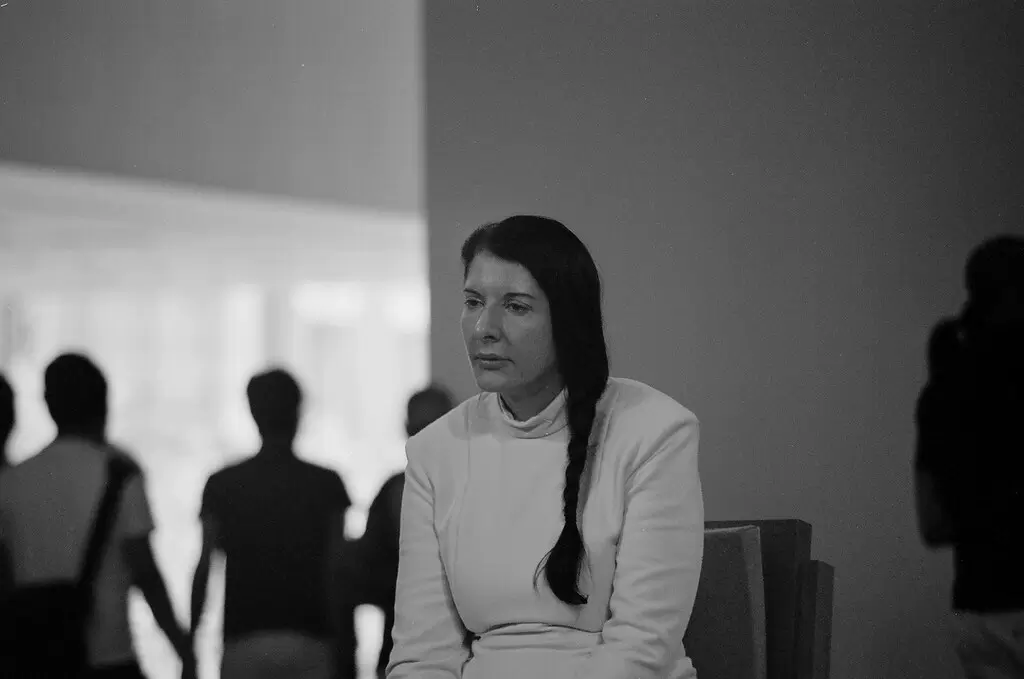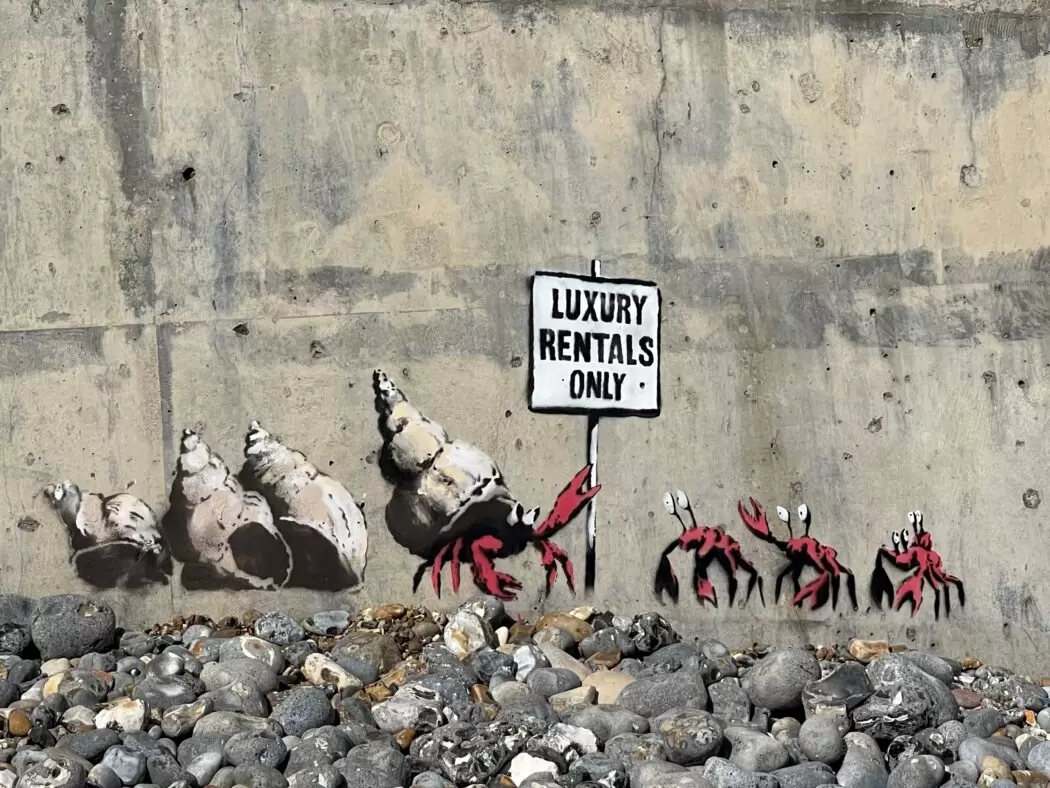Celebrating the International Day Of Climate Action with .art Domains
Whether to engage in debate or change opinions, behaviours, and encourage one to take action, art can play a key role in the awakening of the masses to the perils of climate change.


Above: Ice Texts by David Buckland, 2004–2005. Photograph: Cape Farewell
Our climate is changing around us faster than predicted. From more frequent and extreme storms to unprecedented heatwaves, we’re feeling the impacts of human-caused global warming. Our planet is already 1° C hotter than it was between 1850 and 1900, the pre-industrial era. Climate change is not a problem that governments can solve alone; we need collaborative action across regional governments, businesses, and communities (meaning you and me) as well.
For example: did you know that if a billion people around the world were to take a few small steps and make them into permanent lifestyle changes, global greenhouse gas emissions could be significantly reduced? Sounds promising, but how do we spur people into action?
Several researchers have looked into the role of art in climate change communication. Laura Kim Sommer and Christian Andreas Klöckner published a paper suggesting that climate change art is capable of changing people’s opinions, as long as the message is hopeful, and gives people ideas for change. They based this on an analysis of artworks that were on display during the 2015 United Nations climate change negotiations (COP21) in Paris.
There is undoubtedly a long tradition of so-called environmental art that explores intimate relationships with our environment. Art allows for a way for people to connect more directly with the highly emotional and oftentimes personal aspects of climate change, but it can also help connect to the scientific facts which can sometimes seem insurmountable.
“Art is not a mirror to reflect reality,” wrote Bertolt Brecht, ”but a hammer with which to shape it.”
Here at .art, we’re proud to host a number of amazing artists that either implicitly or explicitly address the issues around climate change. Take some time to engage with their works and hopefully, they will inspire you, and others, to take decisive action in the fight against climate change.
1. World Biennale
The World Biennale is the worldwide traveling innovation laboratory for the contemporary arts with a strong focus on sustainability and responsibility. It’s mission, as stated on their website, is ‘to prompt people mentally and emotionally, to show new meanings, to sensitize, to stimulate perception and reflection, to raise questions, to make the world more interesting and to show its value and richness.’ The World Biennial not only seeks to contribute to the welfare of the world, but also to operate in a sustainable, responsible, reasonable, equitable, and fair manner. Their activities include, but are not limited to: promoting the natural and cultural inheritance of humanity; acting for the benefit of society and its development; respect social and sustainable responsibility; protect life, nature, and its resources; and operating in a professional and legal manner.
Learn more: worldbiennale.art
2. Imagine Human Nature Art
Ulrike Hahn is a researcher as much as she is a creative, covering topics concerned with social and environmental sustainability in relation to art. The imagination is a recurring concept in her practical and theoretical art endeavors, and her work addresses human-nature relations, which is why her website is called imaginehumannature.art. Specifically, her PhD research paper is titled “Imagining the Climate – The Visual Arts to the Rescue?”, which looks at the role that visual arts play in addressing climate-related topics.
Learn more: imaginehumannature.art
3. Lucy And Roy
Lucy and Roy, a husband and wife that successfully work together, headlined the environmental art section of their website with: “The planet has got problems. Mostly us.” While they don’t offer much verbally on their views concerned with the environment, the art speaks for itself.

Medium Japanese hand woven Miyuki beads sewn on to canvas and acrylic paint
Size with frame: 57cm width x 69cm height
By Roy W Hughes / Lucy Hughes
Learn more: lucyandroy.art
4. Art of Resilience
The Art of Resilience brings together international artists, technologists, and makers representing Latin America, South and East Asia, the Middle East, Africa, Europe, and the United States. The Art of Resilience demonstrates how art can unite a range of disciplines—big data, scientific research, and community organizing—to further the understanding and communication of disaster and climate risk. Their mission statement is bold and admirable: they want to inspire individuals, communities, and governments all over the world to incorporate art into their work on the pressing issue of climate change.
Learn more: artofresilience.art
5. Antarctic Biennale
The Antarctic Biennale is an international socio-cultural project. It uses artistic, scientific, and philosophic methodologies to address shared spaces such as Antarctica, the Ocean, and Outer Space. The concept for the Antarctic Biennale was first proposed by Russian artist, sailor, and philosopher Alexander Ponomarev in 2011. Alexander has conducted several expeditions to Antarctica and organized a number of international artistic events on the continent. Their mission statement? To design a platform for intercultural and transdisciplinary dialogue about the future of ’shared spaces’, conduct unique artistic research into the sites on the edge of human experience, and create the foundation for effective communication in such spaces.
Learn more: antarcticbiennale.art
6. Institute for Land and Environmental Art
The Institute for Land and Environmental Art is an international research center dedicated to the Land and Environmental Art. It supports the practice, study, and mediation of artistic interaction with nature, with a particular focus on the Alpine landscape. Since 2016 the institute has been responsible for the conceptualization and organization of Art Safiental (Biennale for Land and Environmental Art) as well as the Alps Art Academy (Summer School for Land and Environmental Art). In 2019 it will start the publication series LANDSCAPE (Documents of Land and Environmental Art).
Learn more: ilea.art
7. Christopher Madden
Christopher Madden was born in Durham in the north of England in 1952. After working for many years as a professional cartoonist, he is now concentrating on his work in other artistic fields. He produces beautiful works concerned with the environment and its relation to us. For example, his work titled Art and science – ants as a superorganism, a proposed art installation or mural showing multiple images of ants crawling across an art gallery wall, with the ants grouping together and coalescing into the form of a single gigantic ant. The work depicts the concept of the superorganism, in which multiple individual organisms of the same species (in this case ants) interact by a process of synergy to give rise to a collective body that can operate in ways that the individuals can’t.

Art and science – ants as a superorganism by Christopher Madden. January 2020 Based on a digital work from 1990
8. Letz Write
‘A poet is a poet because they’re not happy with something in life.’ That’s how two Luxemburg-based English Studies students, Di Ronco and Darinov, open their blog post about eco-poetry and the environment. From Wordsworth to Keats, they’ve beautifully curated a compilation of poems that are preoccupied with the beauty and fragility of nature.
Learn more: letzwrite.art
9. Up & Coming Art
This website sells a variety of art, which includes art that is concerned with the art of capturing trees, flowers, wildlife, and all other beauty that mother nature has to offer. Megan Serene, an environmental artist, says that she creates this kind of work because environmental art allows you to capture a tiny piece of nature and hang it on your wall. We couldn’t agree more.
Learn more: upncoming.art
10. BALTIC
BALTIC’s mission is to create a greater understanding of the world through outstanding, experimental and inspiring contemporary art that has power, relevance, and meaning for individuals and communities. BALTIC is committed to operating sustainably via energy efficiencies, recycling and printing, using local suppliers and working with the local environment and ecology.

Susie Green: Goddess Mouth, Lightbox Commission
Learn more: baltic.art





